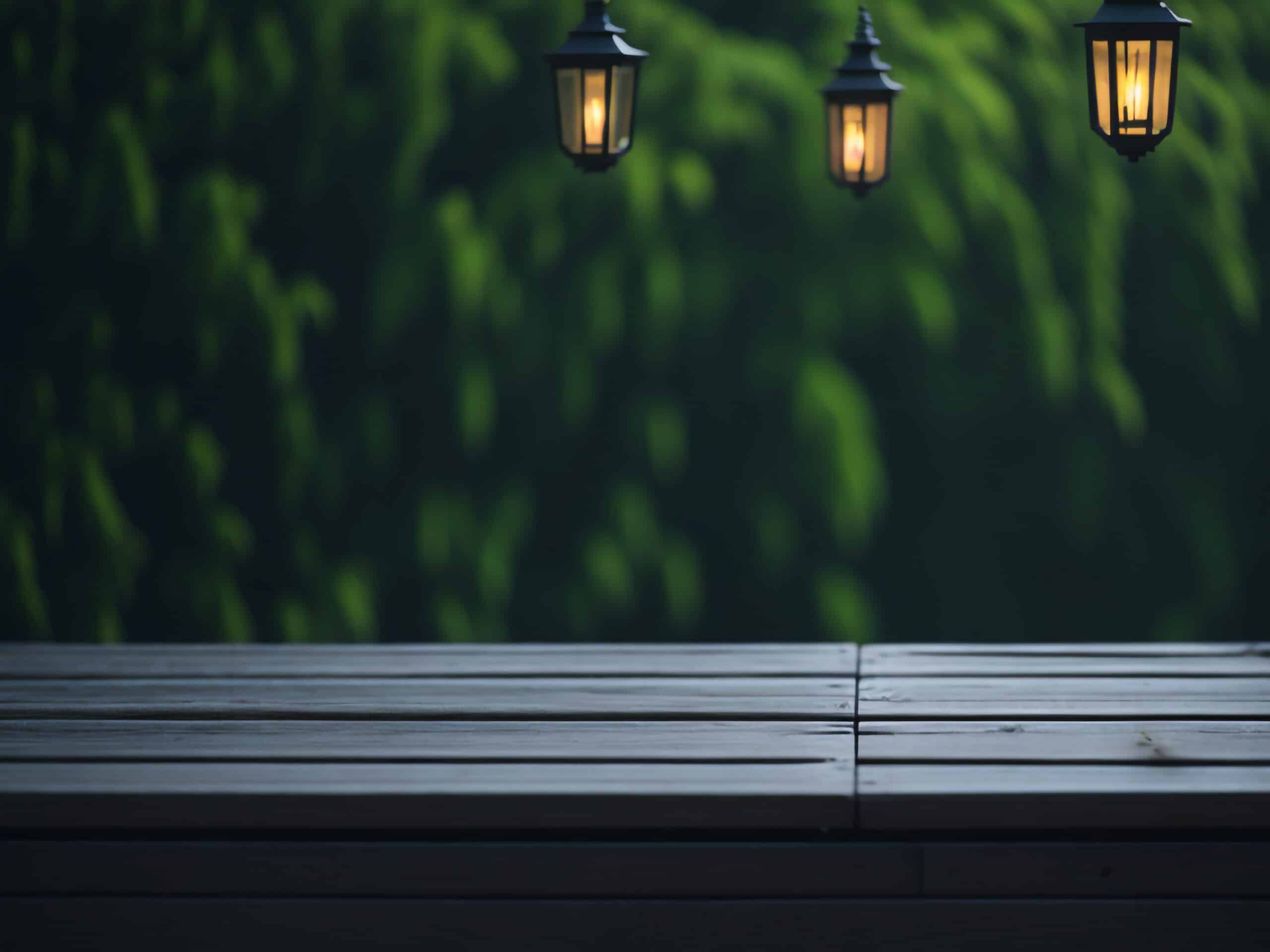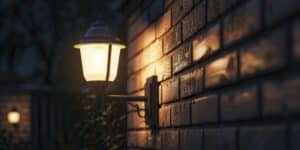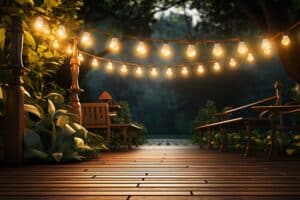What’s the Best Way to Install Outdoor Lighting?
Key Takeaways
- Proper installation is key to achieving desired outdoor lighting results
- Invest in high-quality fixtures made of durable materials
- Use LED lights for energy efficiency and longevity
Outdoor lighting can transform your outdoor space, providing both functionality and aesthetics. Whether you want to enhance safety, highlight landscaping features, or create a welcoming ambiance, proper installation is key to achieving the desired results. In this article, we will explore the best practices and expert tips for installing outdoor lighting to help you make informed decisions and create a stunning outdoor lighting scheme.
1. Plan Ahead and Assess Your Outdoor Area
Before diving into outdoor lighting installation, take the time to assess your outdoor area during both daytime and nighttime. This will help you identify the areas that require lighting and determine the best placement for fixtures. Consider the purpose of the lighting, whether it’s for security, accentuating features, or enhancing safety.
2. Invest in High-Quality Fixtures
Choosing high-quality fixtures is essential for long-lasting outdoor lighting. Opt for fixtures made of durable materials like stainless steel or brass, as they can withstand various weather conditions and resist corrosion. Investing in quality fixtures ensures that your outdoor lighting will endure for years to come.
3. Use LED Lights for Energy Efficiency
LED lights are an excellent choice for outdoor lighting due to their energy efficiency and longevity. Compared to traditional incandescent bulbs, LED lights consume less energy and have a longer lifespan. They also produce less heat, reducing the risk of fire hazards. Additionally, LED lights are available in various colors and intensities, allowing you to create the perfect ambiance for your outdoor space.
4. Focus on Safety and Illumination
When installing outdoor lighting, prioritize safety by illuminating pathways and potential hazards. Properly lit pathways not only enhance safety but also add visual appeal to your outdoor area. Avoid glare by strategically positioning fixtures and using diffusers to create a more pleasant and comfortable lighting experience.
5. Create a Harmonious Lighting Scheme
For a cohesive and inviting outdoor space, create a harmonious lighting scheme by balancing different types of lighting. Consider incorporating ambient, task, and accent lighting to add depth and dimension to your outdoor area. Each type of lighting serves a specific purpose and can contribute to the overall ambiance.
6. Consider Dark Sky-Friendly Lighting
Dark sky-friendly lighting aims to minimize light pollution and preserve the natural darkness of the night sky. By using fixtures that direct light downward and choosing bulbs with proper shielding, you can enjoy your outdoor lighting while being mindful of the environment and your neighbors.
7. Enhance Convenience and Energy Efficiency
Make your outdoor lighting system more convenient and energy-efficient by incorporating timers, motion sensors, or smart controls. Timers can automatically turn on and off the lights at specific times, while motion sensors ensure that the lights only activate when someone is present. Smart controls allow you to control your outdoor lighting from your smartphone, providing added convenience and flexibility.
8. Test the Lighting at Night
Once the installation is complete, it’s crucial to test the lighting at night to ensure the desired ambiance and functionality. This allows you to make any necessary adjustments and fine-tune the lighting scheme to achieve the desired effect.
9. Proper Wiring and Maintenance
To ensure the longevity and safety of your outdoor lighting system, ensure proper wiring with outdoor-rated wiring buried at the appropriate depth. This protects the wiring from accidental damage and ensures a reliable connection. Additionally, schedule regular maintenance to keep the lighting system in peak condition, including cleaning fixtures, replacing bulbs, and inspecting wiring connections.
10. Consult a Professional Electrician
While some outdoor lighting installations can be done as DIY projects, complex installations or electrical work should be left to professionals. Hiring a professional electrician ensures that the installation meets safety standards and local regulations. They can also provide expert advice on design and placement, ensuring optimal lighting effects.
11. Respect Local Regulations and Guidelines
When installing outdoor lighting, it’s essential to respect local regulations and guidelines. Some areas have specific restrictions on the type and placement of outdoor lighting to minimize light pollution and preserve the character of the neighborhood. Familiarize yourself with these regulations to avoid any potential issues.
Installing outdoor lighting requires careful planning, attention to detail, and adherence to best practices. By following these expert tips and considering the purpose, aesthetics, and safety aspects, you can create a beautiful and functional outdoor lighting scheme that enhances your outdoor space for years to come.
Related Websites:
FAQs:
Q: What are the benefits of outdoor lighting?
Outdoor lighting enhances the safety and security of your property by illuminating dark areas. It also extends the usability of outdoor spaces, allowing you to entertain or relax outside even after sunset. Additionally, outdoor lighting can enhance the aesthetic appeal of your home, highlighting its architectural features and landscaping.
Q: What factors should I consider before installing outdoor lighting?
Before installing outdoor lighting, consider your lighting needs and objectives. Assess the layout and size of your outdoor space to determine the type and quantity of lighting required. Examine the existing electrical infrastructure to ensure compatibility. Lastly, evaluate your budget to determine the extent of the outdoor lighting project.
Q: What types of outdoor lighting options are available?
There are various types of outdoor lighting options available, including pathway lights, floodlights, spotlights, string lights, and solar-powered lights. Each type has its own advantages and is suited for specific purposes. For example, pathway lights are ideal for illuminating walkways, while floodlights provide broad coverage for large areas.
Q: How do I troubleshoot common issues with outdoor lighting?
Common issues with outdoor lighting include flickering lights, dimming over time, or lights not turning on. To troubleshoot, check the connections and wiring for any loose or damaged components. Replace any faulty bulbs or fixtures. In case of power issues, ensure that the electrical supply is functioning properly. Regular maintenance, such as cleaning fixtures and clearing debris, can also prevent common issues.
Q: How can I enhance the effectiveness of outdoor lighting?
To enhance the effectiveness of outdoor lighting, consider using layered lighting techniques by combining different types of lights to create depth and ambiance. Use timers or smart controls to automate lighting schedules. Additionally, consider lighting focal points such as trees or architectural features to create visual interest and highlight the unique aspects of your outdoor space.






